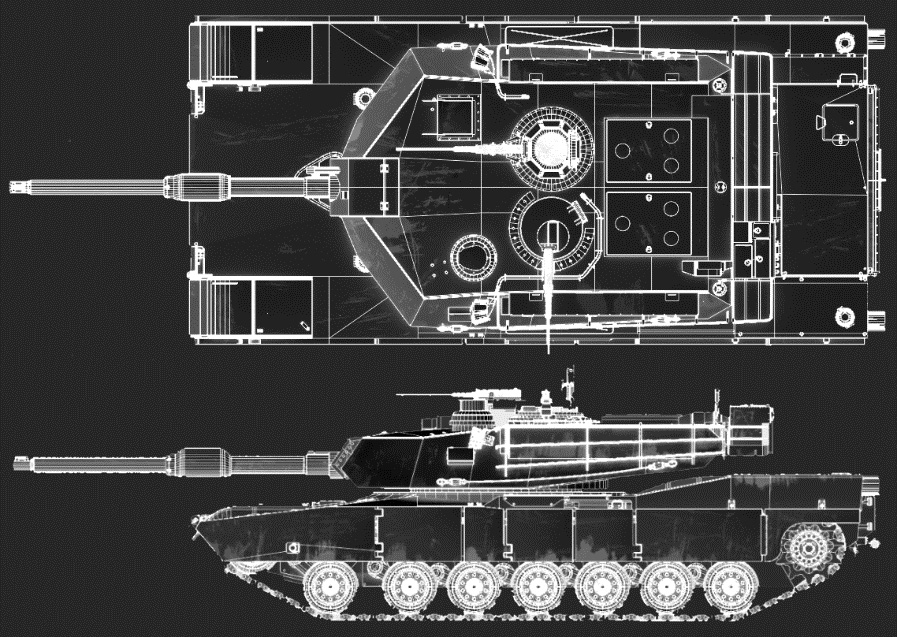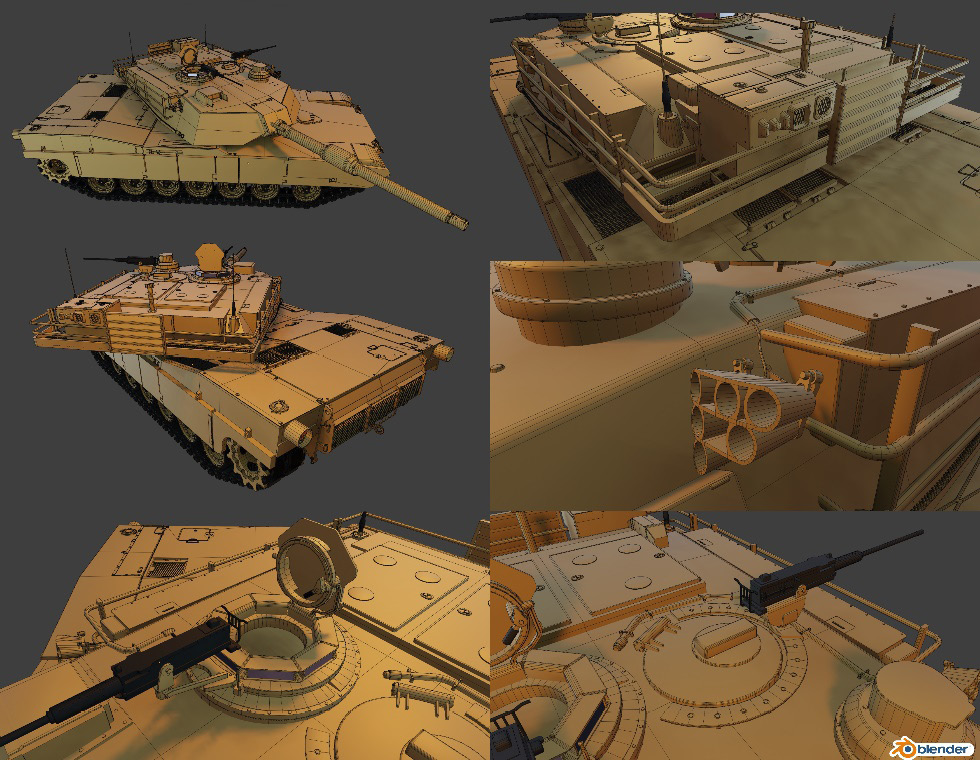Creating a simple hard-surface modeling workflow
So, how do we create hard-surface objects in Blender? Let’s make a simple four-step outline for a typical workflow, which we will later use when creating more sophisticated models.
In this example, we’re going to look at the modeling workflow for this T-72 tank:
- Gathering references: Usually, the first thing we must do is find a reference image to help guide us through a project. For a simple object, a single photo will be enough. But when creating a more detailed object, such as a vehicle, it’s best to find a blueprint, as shown here:

Figure 1.16 – Blueprint
We will cover the details of how to find a blueprint and set it up in Blender in Chapter 2, Creating Basic Shapes for an FN SCAR.
- Separating the parts: We want to break the object down into separate components because this allows us to work step by step. It’s important to do this because when working with complex objects, it’s easy to become overwhelmed as to where to start working. This tank can be broken down into three major components: the hull, the turret, and the tracks/wheels, as shown here:

Figure 1.17 – Parts of a tank
- Creating the block-out model: Now, we can begin creating the objects, starting with the parent. We always want to find a part of the model that everything else is attached is. This will act as a frame of reference and once we create that, we can just keep adding other things to it. In this case, the parent will be the hull because everything else is attached to it. Then, we can create a very simple version of all the major parts:

Figure 1.18 – Block-out
- Increasing detail: Once we have created an outline for the rough shapes of the object, we can start creating the smaller and more detailed parts. In this case, we will start adding hatches, screws, armor panels, and similar. This is what makes the model look more intricate and complete. Most of the work is done in this step:

Figure 1.19 – Details
We now have a basic four-step workflow structure to follow when creating a 3D model. We will follow these steps in our upcoming three projects, which we will quickly go over in the next section.


























































